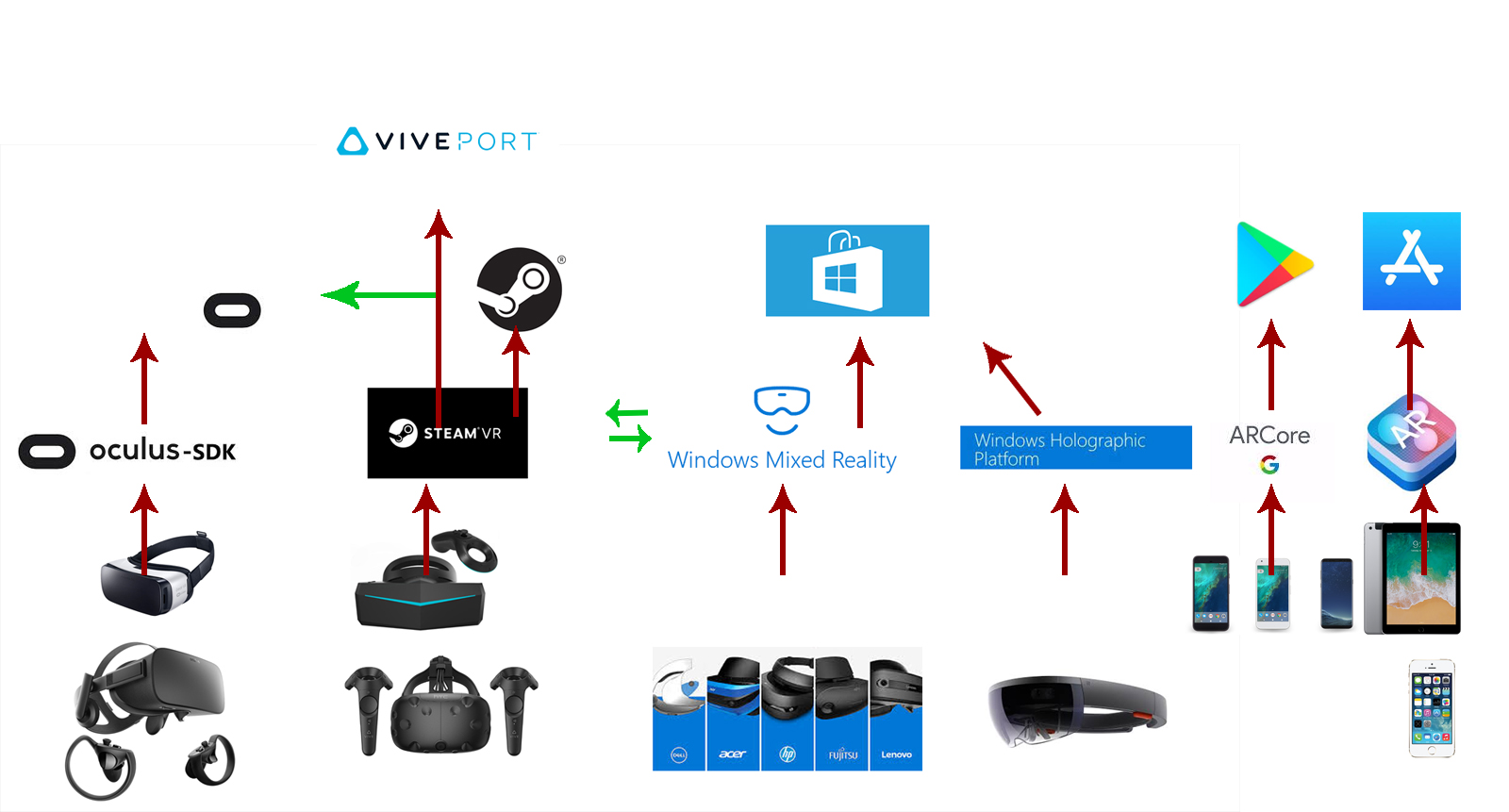
With Pengram, we set out to develop a system that could run as seamlessly on an Oculus Rift or a GearVr as it could on a Hololens or iPhone.
-
Cross-platform. The application logic is abstracted away from the hardware by our custom middleware layer. That means that adding support for new hardware is as simple as writing connectors from their Unity API to our middleware. That's important because it means that we are flexible to new technology breakthroughs (eye-tracking, hand-tracking) and new hardware platforms (like MagicLeap).
-
Bridges AR and VR. The user-interface is the same for AR and VR, even though the input mechanisms might not be. We used custom camera based hand-tracking to replace functionality on platforms where tracked controllers are not available, and Vuforia-powered object recognition to anchor shared holograms in the real world.
-
Spatially Aware. Uses computer vision techniques to identify objects in the real world, and anchor virtual objects to them. This allows annotations to stay in place even as the users move around, and allows users in virtual reality, augmented reality, and the real reality to perfectly sync up their views of the scene.
-
Extensible. There's built-in support for drawing, 2D and 3D geometric primitives, common tools, and video and voice chat. Users can upload their own 3D objects to an asset server to spawn them in the virtual world. By tagging an asset with an image marker, they can be tracked in the real-world too.
-
Security. Users log in to a mobile app that automatically pairs with the headset. Not only does this assure authenticity, but it also solves the problem of text-input in VR.
Here's what it looks like in action.